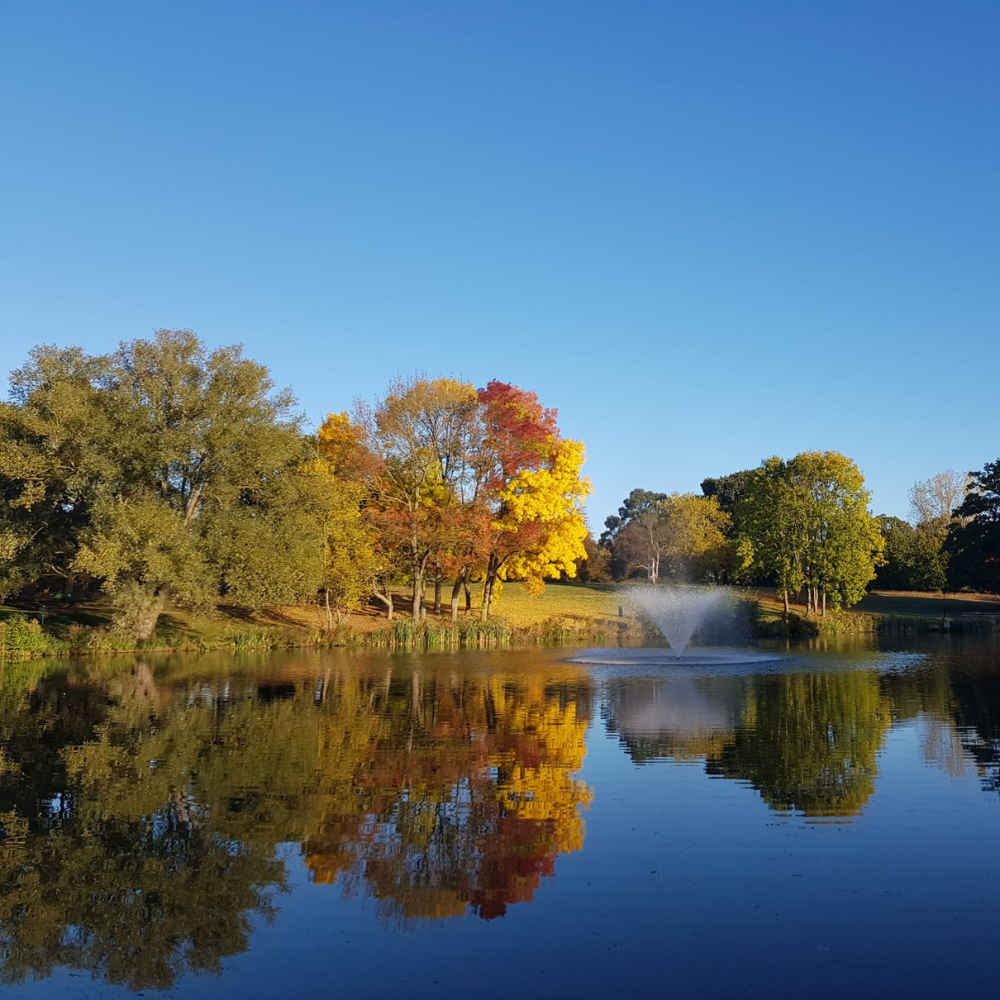As a student here at the University of Essex I thought I knew the campus pretty well. I know where all my lectures are, I know where to get the best food from and I know where to get a beer from. But my view of the size of the campus completely changed when I went on a walk around Wivenhoe Park. There is so much land in Wivenhoe Park that I didn’t even know existed and it is filled with these amazing stretches of land and a whole load of beautiful trees. I got the opportunity to go on this walk with a tour guide and I was in awe the whole time.
I started the walk at the historic Wivenhoe House, which was interestingly used as a base for soldiers during World War Two. The walk up is covered with lots of trees which create a calming feel as you walk up to the hotel. The first big tree on the walk is a Cedar of Lebanon, which is originally from Lebanon where it is used as an insect repellent. It had such massive arching branches which felt like I was walking into a tree covered room, which is exactly what Winston Churchill used it for, he was known for using it for meetings with generals during his visits to the site.
As I walked a little further in I was greeted by some artwork named SPINNEY. Created by Robert Simon, it represents the spinning branches on a tree or bush and it’s an interesting and creative piece which left me staring at it in wonder before you get to the next big tree. I then walked up to the Giant Redwood and truly feel like an ant. This tree is massive. I really got a scale for the supposed world’s largest tree when I stood right up next to the trunk and look up, all you can see is the tree shooting really high into the sky. What's more interesting about this tree is that it has natural protection against wildfires, which just makes the tree even more fascinating.
I then come across the Blue Atlas Cedar. The North African native has a waxy coating on its leaves which gives it this incredible blue tint that I could definitely have looked at for ages. After a quick trip past the grounds team’s barns and the impressive allotment and beehive, I came to a Yew Tree. Living to over 900 years, I could really see the age of this ancient tree when I looked at the wide trunk covered in thick bark. The tree is also known for having a chemical that can treat some cancers.
In the back end of the park I was greeted with an impressive man-made lake that gets its water from the fields across the road. With so many different aquatic plants and animals living in it, it’s a genuinely impressive structure that I could have definitely sat there for ages getting lost in watching the wildlife.
I then move onto the Black Mulberry. With its heart shaped leaves and edible fruits, it makes a beautiful tree to look at right before I got to the Common Walnut, which has the popular nut growing on it right next to the leaves which give off this peppery scent.
The final couple of trees on the walk consist of a Large English Oak, which is estimated to be over 400 years old, and a Swamp Cyprus which naturally grows near and in water but has roots that grow above ground so it can get oxygen for the tree.
Overall the one word I would use to describe the walk around Wivenhoe Park would be peaceful. There are 220 acres of land to get lost in and just let your sense of wonder and imagination run wild. Even if you're not a fan of trees, you may still find yourself in awe of some of the trees they have there and finding yourself amazed at some of the things these trees can do. It is definitely the spot to go if you're looking for a walk just to clear your head or somewhere to have a wonder in between lectures.

